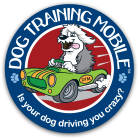How the Pandemic is Affecting Our Dogs
- Gerard Raneri
- Nov, 01, 2020
- Behavioral Issues, Training
- Comments Off on How the Pandemic is Affecting Our Dogs
How the Pandemic is Affecting Our Dogs
The pandemic has forced many of us into adopting a new lifestyle, most notably that of working from home every day. And our dogs are loving it! More walks, more snacks, and lots more snuggle time with their favorite creature—you! And we suspect that the feeling is mutual. Now think of how long this has been going on, with your dog by your side for eight months. Heaven!
But it’s not all roses and milk bones.
Is this you? Perhaps your area’s stay-at-home restrictions eased up, and you decided to venture out for a meal on a restaurant patio or for a socially distanced visit with friends.
Did you come home to a wrecked house? The remote control chewed up, the book you left on the couch destroyed, trash cans tipped over and rummaged in—and you’re left wondering, “What’s going on with this dog?”
Separation anxiety!
This common behavioral problem has become one of the main reasons why dog owners have been calling me since the pandemic’s work-from-home routine began.
So what’s really happening here? Why has your dependable, sensible dog suddenly started going haywire?
Pack Psychology
Remember that dogs are pack animals. They want to be with their pack members, especially their pack leader (that’s you!). A strong pack provides everything a dog needs to survive, including food, shelter, security and entertainment. When your dog’s new (and happy) routine of having his beloved pack leader nearby is suddenly disrupted, deep-rooted anxiety can set in. (If your dog views himself as the pack leader, his feelings of anxiety can actually be worse.) Once a dog starts exhibiting behaviors of separation anxiety, it’s not easy to turn around. Behavior modification (training) is key.
Have a new puppy in the house? Then you have a head start in teaching your dog to feel safe and comfortable when he’s left alone. When applied consistently and thoughtfully, the following training tips can work for dogs of any age.
Start NOW
The moment you see signs of separation anxiety, immediately begin to implement actions to help prevent the behavior from escalating. Begin by separating yourself from your dog when you’re both inside your home. Prop a baby gate between rooms or teach your dog to wait for you while you’re in the bathroom or garage.
Start small and then begin to raise the bar little by little. The idea is to arrange for short increments of time for your dog to be alone and then build from there.
If your dog is comfortable in a crate, then crate him for 10 minutes or so while you are in the house. In most cases a crate is a great option, as so many dogs feel secure when crated. However, if your dog is not crate trained, now may not be the best time to start.
Consider other ways you can limit your dog’s movements within the house. Close doors or use gates so he doesn’t have full run of your entire house, no matter its size.
Create a safe area where all that your dog can get into is his own toys. When you corral him there, provide a treat-dispensing toy (such as a Kong) and play low music to provide soothing white noise for him.
You Can Do It!
Start small and build on your successes. Separation anxiety can become very severe, so learning how to prevent it in the first place is best.
Some herbal supplements can help ease your dog’s fears, and in extreme cases, veterinarian prescribed medication may help, but the success rate varies with each individual dog. Discuss the options with your veterinarian.
Even if your dog does require medication, you will still need to use behavioral modification to desensitize and counter-condition him. With patience and consistency your dog can learn that being alone is not the end of the world.





